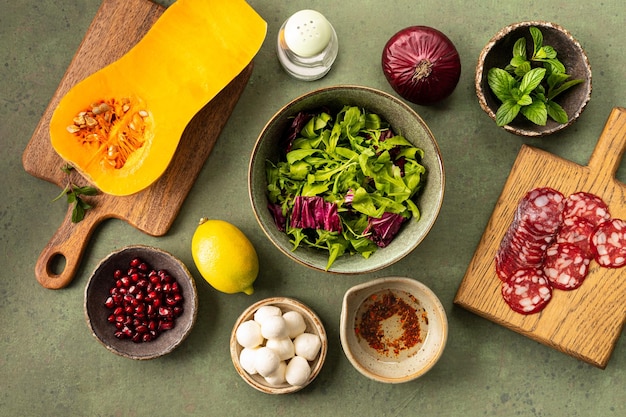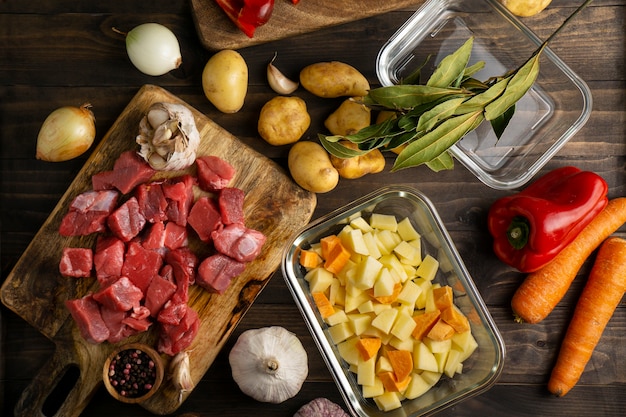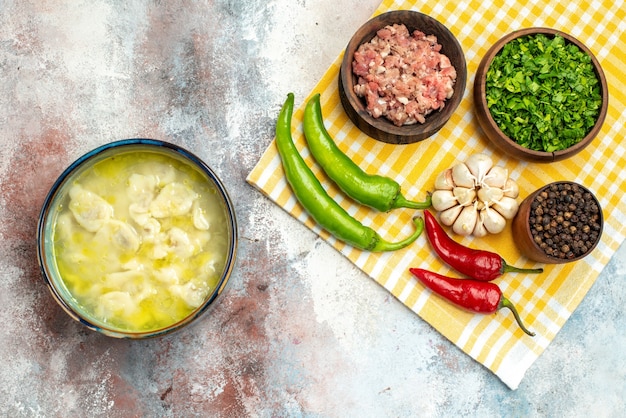The aroma of slow-cooked corned beef, the comforting warmth of a steaming bowl of cabbage, the joyful chatter around a table laden with good food – these are the hallmarks of a true corned beef and cabbage experience. This isn't just a dish; it's a nostalgic journey through Irish history, a testament to their resilience and ingenuity. For me, it's a dish that evokes vivid memories of childhood Sundays spent at my grandmother's house, the air thick with the scent of simmering meat and the warmth of family gatherings. It's a taste of home, of tradition, of belonging.
However, I understand that not everyone has those cherished memories. Some might view corned beef and cabbage as a plain, uninspired dish. But let me tell you, this humble creation is anything but ordinary. It's a blank canvas for culinary creativity, a foundation for endless variations and delicious possibilities. With a few tweaks and creative additions, it can transform from a standard Sunday supper into a culinary masterpiece.
So, grab your favorite mug, brew a cuppa, and join me on a captivating journey into the world of corned beef and cabbage. This isn't just a recipe; it's an exploration of this iconic dish, its history, its preparation, and its diverse variations. By the end, you'll not only be equipped to cook a sensational corned beef and cabbage but also understand its true charm, its ability to transcend time and connect us all through a shared culinary experience.
(Part 1) The History: A Journey Through Time

The story of corned beef and cabbage is intricately woven into the fabric of Irish history, a tale that spans centuries and reflects the changing tides of life in this emerald isle. It's not a dish that sprung into existence overnight; it evolved, adapting to the needs and circumstances of the people who called Ireland home.
A Salty Saga: The Rise of Corned Beef
The journey begins with corned beef, a curious import that wasn't always a part of the Irish culinary landscape. It arrived from across the Atlantic, brought by the English as a solution to the age-old problem of preserving meat for long sea voyages. This method of "curing" beef with salt – a process that significantly extended its shelf life – gave the meat its distinctive name.
While the Irish weren't initially enamored with this salty newcomer, it quickly became a necessity in the 19th century. Ireland's rapidly growing population and struggling agriculture made finding affordable protein a daunting task. Corned beef, readily available and cheap, became a lifeline, a symbol of survival in the face of hardship. It was a testament to the resilience of the Irish people, who embraced this foreign ingredient and incorporated it into their daily lives.
A Humble Pairing: The Rise of Cabbage
Now, let's talk about the cabbage, a vegetable often overlooked in modern cuisine but a staple in Ireland for centuries. It provided a vital source of vitamins and minerals, especially during times of scarcity. The rise of corned beef in the 19th century led to a natural pairing with this humble vegetable. Cabbage offered a refreshing contrast to the salty, rich corned beef, its delicate sweetness balancing the flavors beautifully.
This pairing wasn't simply a matter of convenience; it was a harmonious union of two humble ingredients that became something extraordinary. It wasn't just a meal; it was a symbol of resourceful living, of making the most of what was available. And as time marched on, this simple dish took on a profound meaning. It became a symbol of Irish heritage, a link to the past, a reminder of a time when people came together, shared a meal, and celebrated their resilience.
(Part 2) The Modern Era: A Dish Reimagined

Fast forward to the present day, and corned beef and cabbage continues to hold a cherished place on tables across Ireland and beyond. It resonates with many, even those without direct Irish ancestry. There's a universal appeal to its comforting simplicity, its ability to bring people together around a shared experience.
From Family Tables to Fine Dining
While corned beef and cabbage remains a staple in homes worldwide, it has also found its way into the world of fine dining. Chefs have embraced this humble dish, adding their own creative twists and elevating it to new heights. They've created innovative interpretations that pay homage to its heritage while embracing fresh flavors and techniques, proving that this classic dish is anything but limited.
A Dish for All Seasons
Corned beef and cabbage is a dish for all occasions and all seasons. In the colder months, it's a comforting and warming meal that satisfies the soul. In the warmer months, it can be enjoyed as a lighter, more refreshing dish, with a focus on fresh, seasonal ingredients. Its versatility makes it an adaptable companion, perfect for any occasion, any season, any mood.
(Part 3) Understanding the Ingredients: A Breakdown

Before we delve into the actual recipe, let's break down the key ingredients, the stars of this culinary masterpiece. We're talking about corned beef and cabbage, of course, but there are a few other supporting characters that deserve a spotlight.
The Star of the Show: Corned Beef
Corned beef is the undisputed star, the heart and soul of the dish. It's a cured brisket of beef, typically seasoned with salt, black pepper, and sometimes other spices like coriander or bay leaf. You can find it in various cuts and sizes, from whole briskets to pre-sliced packs. Choose your preference, but remember, a high-quality corned beef is the cornerstone of a truly delicious dish.
The Perfect Counterpoint: Cabbage
Cabbage is the perfect counterpoint to the salty, rich corned beef, its delicate sweetness balancing the flavors beautifully. It's a versatile vegetable, available year-round in various varieties. Red cabbage adds a touch of vibrant color and sweetness, while green cabbage offers a more traditional taste. No matter your preference, cabbage is an essential element in any corned beef and cabbage recipe.
The Supporting Cast: Carrots and Potatoes
Carrots and potatoes play essential supporting roles, adding depth and texture to the dish. Carrots contribute sweetness and a vibrant orange hue, while potatoes provide a comforting starchy base. They are incredibly versatile, offering endless possibilities for different preparations, from boiled to roasted to mashed, adding another layer of deliciousness.
The flavor enhancers: spices and herbs
Spices and herbs are the subtle but powerful flavor enhancers, adding a touch of magic to the dish. The most common spices used in corned beef and cabbage are black pepper and bay leaf, but don't be afraid to get creative! Paprika, mustard seed, or even a hint of garlic powder can add intriguing dimensions. Fresh herbs like parsley or thyme can also elevate the dish, adding a vibrant, aromatic touch.
(Part 4) Cooking the perfect corned beef and Cabbage: A Step-by-Step Guide
Now that we've explored the key players, let's dive into the heart of the matter: the cooking process. This is where the magic truly happens! I'm sharing my tried-and-true method for creating a truly delicious corned beef and cabbage, but remember, this is a foundation, a starting point for your own culinary adventures. Feel free to experiment, adapt, and personalize it to your taste.
The Preparation: Setting the Stage
Begin by prepping the corned beef. If you've purchased a whole brisket, trim off any excess fat, leaving a thin layer for flavor. Rinse the corned beef thoroughly and pat it dry. Now, it's time to decide on your cooking method. You can choose to cook the corned beef in a slow cooker, a dutch oven, or even a pressure cooker. Each method offers a unique flavor profile and texture. For this guide, we'll focus on the classic stovetop method, using a Dutch oven.
The Slow Cook: Patience is Key
Place the corned beef in the Dutch oven, adding a few cups of water, a few bay leaves, and a generous amount of black peppercorns. Bring the mixture to a boil, then reduce the heat to a simmer, partially covering the pot. Let the corned beef simmer gently for 3-4 hours, or until it's tender enough to shred easily with a fork. While the corned beef is simmering, start preparing the vegetables.
The Veggie Prep: A Colorful Cast
Wash and chop the cabbage into large chunks. Peel and chop the carrots into thick slices. Scrub and cut the potatoes into large chunks. Now, it's time to add these vegetables to the Dutch oven. Place the cabbage around the corned beef, followed by the carrots and potatoes. Let everything simmer together for another hour, or until the vegetables are tender and the corned beef is perfectly cooked.
The Finishing Touches: A Taste of Magic
Once the corned beef and cabbage are cooked, remove the corned beef from the pot and let it rest for a few minutes. Carefully skim off any excess fat from the cooking liquid. This liquid, known as "pot likker," is a treasure trove of flavor and can be used to make a delicious broth or gravy. You can also add a squeeze of lemon juice or a splash of vinegar to the pot likker for a tangy twist. Now, it's time to serve!
(Part 5) Serving Up a Feast: The Presentation Matters
Presentation matters, even for a classic dish like corned beef and cabbage. A beautifully plated meal can elevate the dining experience, making it more enjoyable and satisfying. Here are a few tips for serving up your corned beef and cabbage with flair:
A Touch of Elegance: The Plating
Start by choosing a serving platter or bowl that complements the dish. A simple, rustic platter is a great choice, allowing the vibrant colors of the corned beef and cabbage to shine. Arrange the corned beef, cabbage, carrots, and potatoes artfully on the platter, ensuring each element is visible. You can even add a few sprigs of fresh parsley or a drizzle of pot likker for extra visual appeal.
Sides that Complement: A Symphony of Flavors
Corned beef and cabbage is a hearty meal, but it can be even more satisfying when served with a few sides that complement its flavors. A classic pairing is Irish soda bread, a dense, flavorful bread that's perfect for soaking up the pot likker. Other options include mashed potatoes, coleslaw, or a simple green salad.
A Beverage Pairing: The Perfect Complement
No meal is complete without a beverage, and corned beef and cabbage is no exception. A classic pairing is a cold pint of Guinness, the rich, creamy stout that's a staple of Irish pubs. If you prefer something lighter, a chilled cider or a crisp white wine will also complement the flavors of the dish.
(Part 6) Variations on a Theme: Exploring New Flavors
While corned beef and cabbage is a classic, it's also incredibly versatile. There are endless possibilities for variations, allowing you to explore new flavors and create your own unique twists.
Spiced Up: Adding a Touch of Heat
For those who enjoy a bit of heat, adding a pinch of red pepper flakes or a sprinkle of cayenne pepper to the pot likker can add a welcome kick. Experiment with other spices like cumin, paprika, or even a hint of cinnamon. Don't be afraid to get creative and try different combinations to find what suits your palate best.
Sweet and Savory: Balancing Flavors
If you prefer a sweeter note, add a diced apple or pear to the pot likker during the final hour of cooking. The fruit will soften and release its sweetness, creating a lovely balance of flavors. You can also try adding a dollop of apple sauce or cranberry sauce to your serving for a sweet and tart contrast.
Global Influences: A Fusion of Cultures
Corned beef and cabbage can be infused with global influences, incorporating flavors from other cuisines. For a Mediterranean twist, add a handful of chopped Kalamata olives, a sprinkle of oregano, and a splash of red wine vinegar to the pot likker. For an Asian-inspired variation, try adding a tablespoon of soy sauce and a pinch of ginger to the pot likker, along with a few chopped scallions. The possibilities are truly endless!
(Part 7) Beyond the Plate: The Legacy of Corned Beef and Cabbage
Corned beef and cabbage is more than just a delicious dish. It's a cultural icon, a symbol of heritage, and a reminder of the resilience and ingenuity of the Irish people. It's a dish that has stood the test of time, evolving and adapting to the changing world while retaining its core essence.
A culinary legacy: A Dish for Generations
Corned beef and cabbage is a dish that has been passed down through generations, a culinary legacy that continues to thrive. It's a dish that brings people together, fostering a sense of community and connection. It's a reminder of shared history, of family traditions, of the simple pleasures of life.
A Cultural Icon: A Symbol of Identity
Beyond its culinary significance, corned beef and cabbage is a cultural icon, a symbol of Irish identity. It's a dish that is associated with St. Patrick's Day celebrations, a time when people around the world come together to celebrate their Irish heritage. It's a dish that evokes a sense of pride and belonging, a reminder of the rich tapestry of Irish culture.
(Part 8) FAQs: Unveiling the Mysteries
Let's address some common questions about corned beef and cabbage, delving into the nitty-gritty and uncovering the answers to some frequently asked questions.
1. Where can I buy corned beef?
Corned beef is readily available at most supermarkets and butchers. Look for it in the refrigerated meat section, often labelled as "corned beef brisket" or simply "brisket." It's usually sold pre-packaged, but some butchers may offer fresh corned beef.
2. Can I cook corned beef in a slow cooker?
Absolutely! A slow cooker is an excellent way to cook corned beef. Simply follow the same instructions as for stovetop cooking, placing the corned beef, water, spices, and vegetables in the slow cooker. Cook on low for 8-10 hours or on high for 4-6 hours.
3. How do I know when the corned beef is done?
The corned beef is done when it's tender enough to shred easily with a fork. You can also check the internal temperature using a meat thermometer. It should reach an internal temperature of 160°F (71°C).
4. What can I do with leftover corned beef?
Leftover corned beef is a culinary treasure trove! You can make sandwiches, hash, or even a delicious corned beef and cabbage soup. You can also shred the corned beef and freeze it for later use.
5. What are some tips for making the best corned beef and cabbage?
Here are a few tips for making the best corned beef and cabbage:
- Use a good quality corned beef, preferably a whole brisket.
- Don't overcook the corned beef. It should be tender but not falling apart.
- Add a few bay leaves to the pot likker for extra flavor.
- Don't be afraid to experiment with different vegetables and spices.
- Serve the corned beef and cabbage with a side of Irish soda bread or mashed potatoes.
(Part 9) A Culinary Adventure Awaits
So there you have it. The ultimate guide to corned beef and cabbage, a dish that's more than just a recipe. It's a story, a journey through time, a celebration of Irish heritage and culinary ingenuity. I hope this guide has inspired you to embark on your own corned beef and cabbage adventure, to discover the magic of this classic dish. Get in the kitchen, gather your ingredients, and let's create some memories! Enjoy!
Everyone is watching

How to Cook Frozen Lobster Tails Perfectly: A Step-by-Step Guide
RecipesLobster. Just the word conjures up images of lavish meals, special occasions, and a taste of luxury. But let's...

Pigs in a Blanket Cooking Time: How Long to Bake for Perfect Results
RecipesAh, pigs in a blanket. Just the name conjures up images of those delightful little parcels of crispy pastry en...

Pork Fillet Cooking Time: How Long to Cook It Perfectly
RecipesPork fillet, or tenderloin as it's sometimes called, is a real favourite in our house. It's so versatile, and...

The Ultimate Guide to Cooking Sweet Potatoes: From Roasting to Mashing
RecipesSweet potatoes. Just the name conjures up images of warm, comforting dishes, bursts of vibrant color, and a to...

The Ultimate Guide to Tender, Juicy Pulled Pork
RecipesRight, let's talk pulled pork. It's one of those dishes that just screams "comfort food," doesn't it? I mean...
